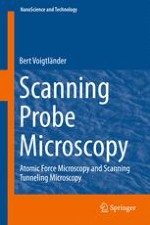2015 | OriginalPaper | Buchkapitel
20. Scanning Tunneling Microscopy
verfasst von : Bert Voigtländer
Erschienen in: Scanning Probe Microscopy
Verlag: Springer Berlin Heidelberg
Aktivieren Sie unsere intelligente Suche, um passende Fachinhalte oder Patente zu finden.
Wählen Sie Textabschnitte aus um mit Künstlicher Intelligenz passenden Patente zu finden. powered by
Markieren Sie Textabschnitte, um KI-gestützt weitere passende Inhalte zu finden. powered by
